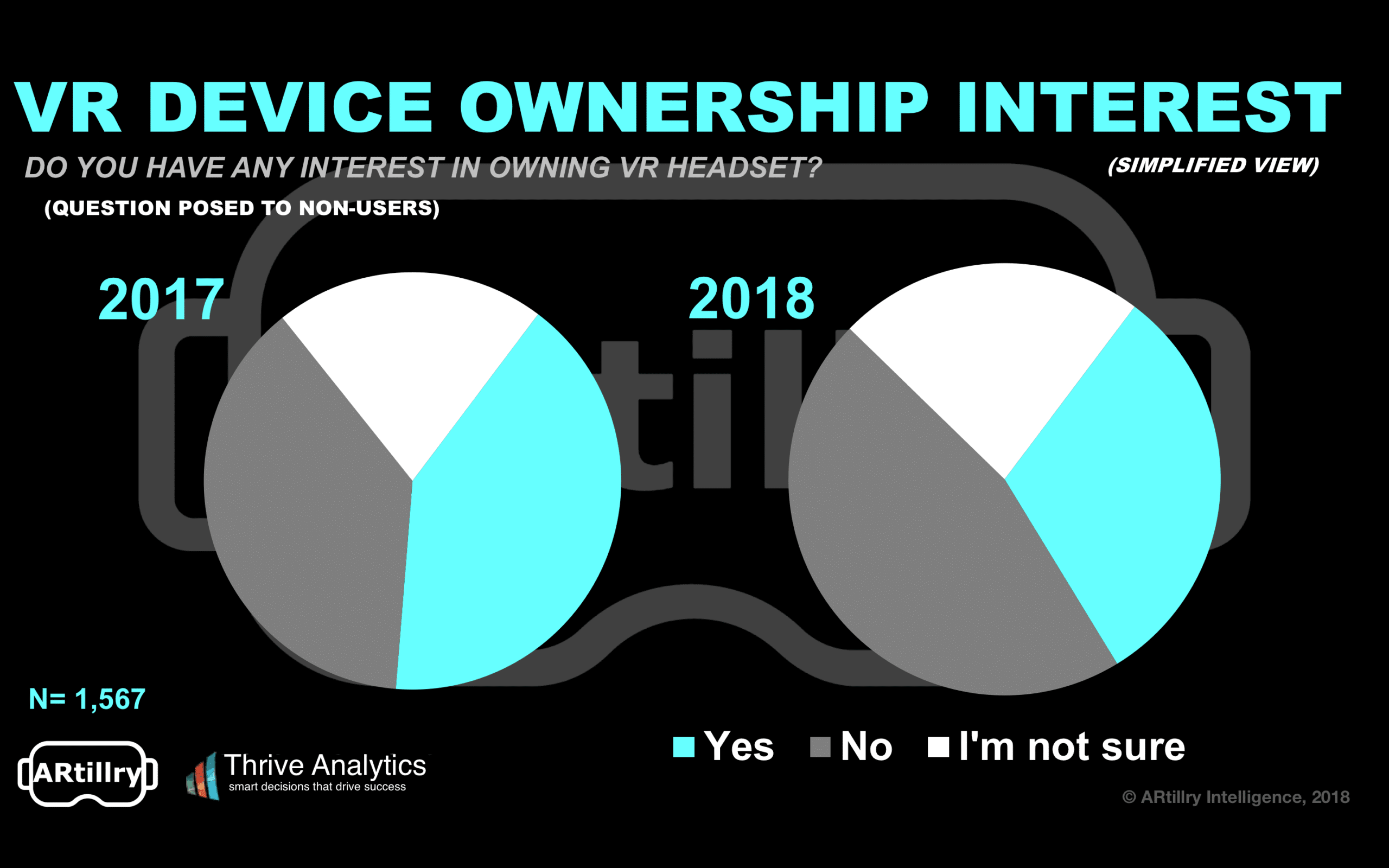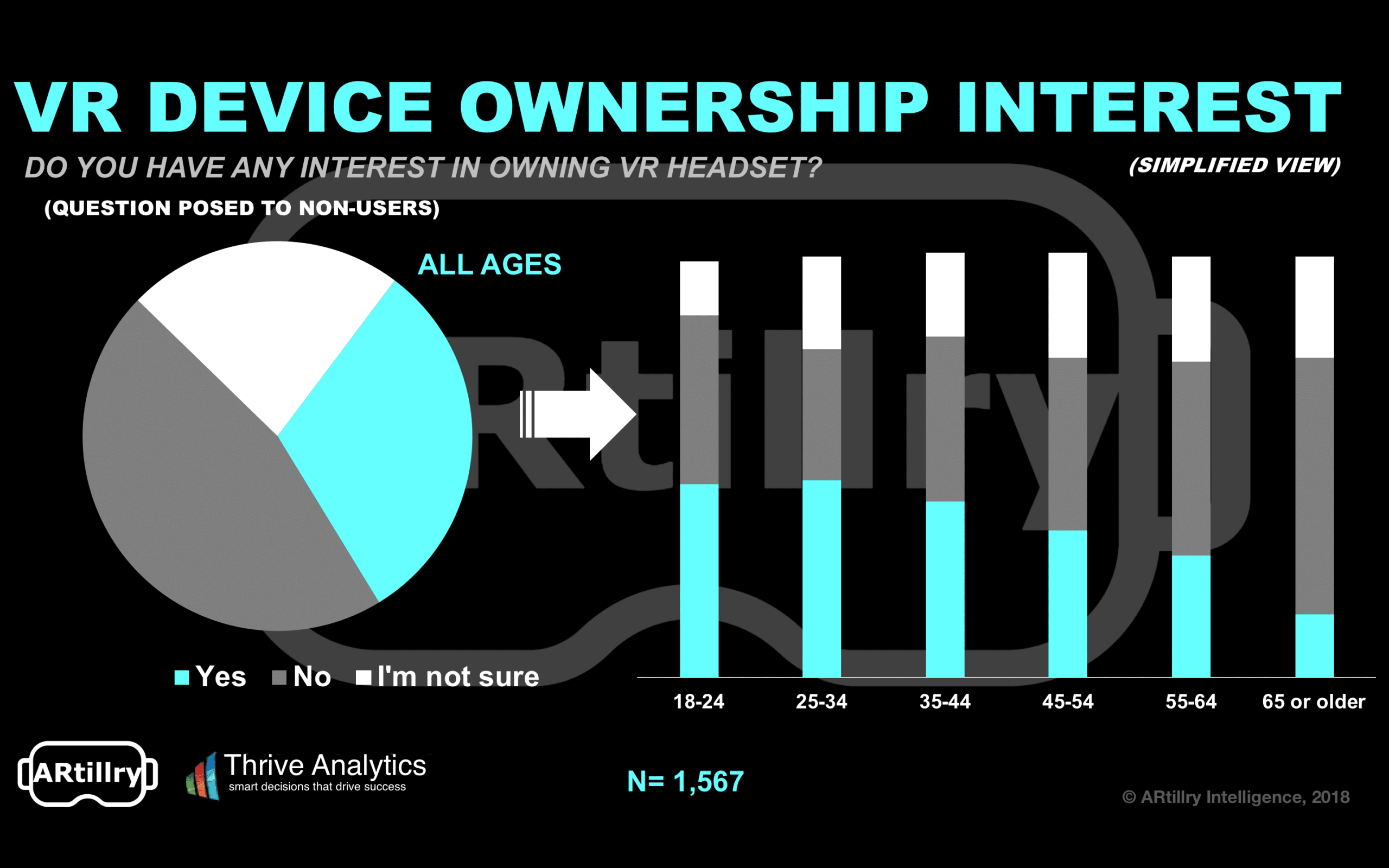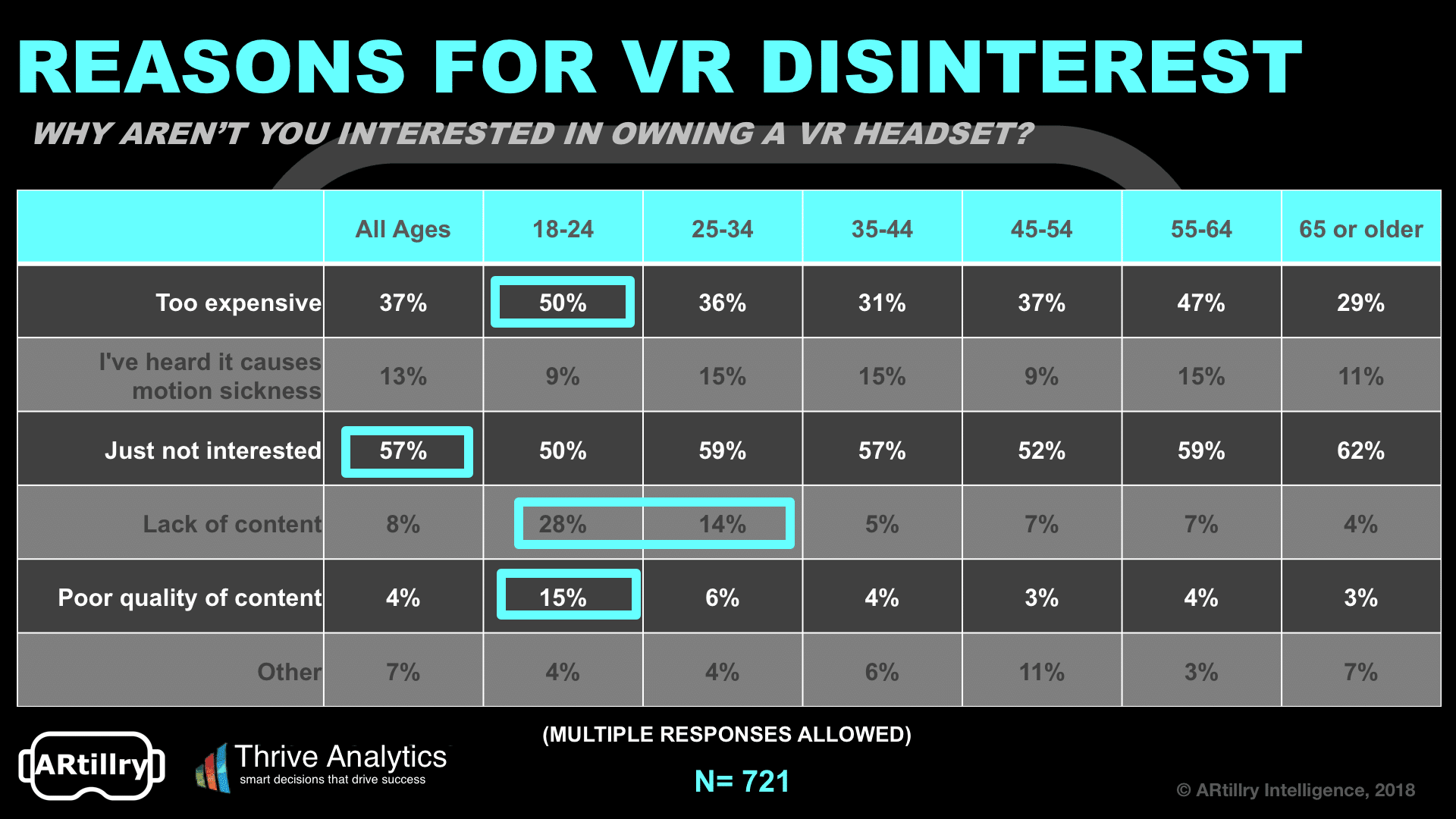
“Behind the Numbers” is ARtillry’s series that examines strategic takeaways from its original data. Each post drills down on one topic or chart. Subscribe for access to the full library and other knowledge-building resources.
We’ve written a lot about VR users’ activity and attitudes. But what about non-users? Because they’re a much larger group, appealing to them is key. And that requires knowing what they like (and don’t). So we decided to ask them in our recent consumer VR survey with Thrive Analytics.
How do they feel about VR and how eager are they to jump into it? 31 percent report interest while 46 percent aren’t interested, and 23 percent aren’t sure. These results are promising in one sense, however their comparison to 2017 doesn’t paint a pretty picture for VR.
Specifically, the 31 percent of non-users who reported interest is down from 41 percent in 2017. That’s a pretty sharp decline, likely a result of the overall cooling of interest we’ve anecdotally observed over the past year. Consumer interest has clearly waned from its early 2017 high.

Mixed Signals
However, another way to read these figures is as a classic market correction. As we observed in January’s Intelligence Briefing, the drop in VR interest and investment should be viewed as a return to market-reflective levels, and away from the hype cycle that ruled 2016-2017.
Just like the 2000’s eCommerce bubble, the exuberance wasn’t misplaced… it was just early. Eventual market sizes exceeded lofty expectations, but not until 5-7 years later. We believe VR interest, and these representative survey results, will likewise bounce back in a few years.
As for interest by age, this segmented in ways that were both expected and aligned with Wave I results. Interest was highest among younger age groups such as 25-34 (47 percent) and 18-24 (46 percent). Interest level in fact has a directly inverse relationship with age.
ARtillry believes this youth correlation is due to digital natives’ savvy, comfort and interest to experience emerging technology. This is an important realization, as it indicates a strong future for VR as younger generations cycle into the ranks of buying-empowered adult consumers.

A Divided Market
More important than binary interest levels in VR are the reasons behind them. This can shed light on non-users’ reasons for disinterest and therefore what features and components can be changed or optimized to bring more people into VR. Their objections can be telling.
So the question is, among non-VR users reporting negative or unsure interest, what are their reasons? Why aren’t they interested? Not surprisingly, price and content were factors (we’ll tackle price in a future post). But the biggest reason was the rather damning “just not interested.”
Just like our AR sister report, this stark and definitive sentiment was the largest single answer (57 percent) for disinterest in the core survey sample. ARtillry believes that this indicates two key challenges and areas of improvement for VR proponents: education and distribution.
Those who try VR for the first time are often sold right away. But the flip side is that its level of immersion dictates that you have to see it to believe it. And relatively few people get that chance, due to hardware friction. So getting that “first taste” to the masses is a key business objective.

Gateway Drugs
The consumer acclimation that’s necessary to bring VR adoption to more meaningful levels will likely happen naturally over time. But there are also a few factors and initiatives — “gateway drugs” as we like to call them — that could accelerate that mainstream push. They include:
1. Retail installations
2. Location-based VR
3. Standalone headsets
Retail installations have been challenging, such as Oculus’ discontinued Best Buy program. We believe these will resurge in 2019. Location based VR (LBVR) is also worth examining, including free-roam team competitions that can benefit from network effects and social dynamics.
LBVR can also accelerate overall industry growth by lowering barriers through a “rent versus buy” appeal. In other words, it replaces VR’s ownership barriers with more digestible and temporal experiences – in both time and cost. Moreover, it accomplishes that “first taste,” on a larger scale.
And there’s an important historical parallel at play. In the 70s and 80s, arcades were prevalent before home gaming console ownership became ubiquitous. VR Arcades could fill that same gap – albeit temporarily – for VR. This can help model a trajectory for VR’s directions and opportunity.
Lastly, standalone/untethered headsets will accelerate mainstream adoption as we’ve examined. Oculus Go for example has a mainstream-friendly (and giftable) price point, its content library is vast, and its on-boarding friction is low. It therefore checks the most boxes for mainstream appeal.
You can see a deeper dive on all of the above in our full report on the consumer VR survey, and stay tuned for occasional snippets and analysis here.
For a deeper dive on AR & VR insights, see ARtillry’s new intelligence subscription, and sign up for the free ARtillry Weekly newsletter.
Disclosure: ARtillry has no financial stake in the companies mentioned in this post, nor received payment for its production. Disclosure and ethics policy can be seen here.
Header image credit: Sony
